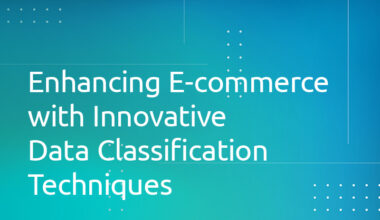In the intricate world of e-commerce, data is the linchpin of success. How this data is dissected, understood, and utilized can make all the difference. Enter data parsing, a methodological process that translates data into a more readable format, forming the backbone of effective e-commerce operations.
- Data Parsing: Breaking It Down
- Definition: Data parsing is the process of converting unstructured data, whether from user inputs or external sources, into a structured format suitable for further processing or storage.
- E-commerce Application: Extracting product details from suppliers, converting user reviews into actionable insights, or interpreting search queries for better product matching.
- The Necessity of Parsing in E-commerce
- Enhanced User Experience: Enables quicker, more accurate search results, making navigation easier for users.
- Better Data Management: Converts vast amounts of unstructured data into organized, actionable information.
- Efficient Operations: Streamlines inventory management, order processing, and customer service inquiries.
- Techniques in Data Parsing
- Regular Expressions: Patterns used to match and extract data from strings. Especially effective for text-heavy data sources.
- Context-Free Grammars: Useful for complex data structures where hierarchy or nested data is present.
- Tokenization: Breaking down data into smaller chunks or ‘tokens’, useful for understanding user searches.
- Advanced Parsing with Machine Learning
- Natural Language Processing (NLP): Enables systems to understand and interpret human language. In e-commerce, it can decipher user reviews or product descriptions.
- Deep Learning: Advanced models that can recognize patterns in data, making the parsing process more accurate over time.
- Challenges in E-commerce Data Parsing
- Data Volume: E-commerce platforms handle massive amounts of data daily, which can overwhelm traditional parsing methods.
- Diverse Data Sources: Different suppliers or sources might provide data in varied formats, complicating the parsing process.
- Real-time Needs: The need for real-time data processing requires swift and efficient parsing techniques.
- Success Stories: Pioneers in E-commerce Parsing
- Amazon’s Product Recommendation: By parsing user behavior and purchase histories, Amazon offers highly accurate product recommendations.
- Etsy’s Search Functionality: Using advanced parsing algorithms, Etsy ensures users find exactly what they’re looking for, even with vague search terms.
- Future Directions and Innovations
- Real-time Parsing Systems: Immediate data interpretation, especially important for flash sales or live customer interactions.
- Integrative Systems: Combining parsing with other technologies, like AR, for a richer e-commerce experience.
- Automated Data Cleaning: Post-parsing systems that further refine data quality, removing inconsistencies or errors.
Data parsing, while a deeply technical process, is truly an art form in the e-commerce realm. It’s a delicate balance of science, understanding user behavior, and predicting market trends. As e-commerce continues its exponential growth, the evolution and perfection of data parsing techniques will undoubtedly remain at its forefront.
Looking to Upgrade Your E-commerce Data Strategy?
Dive deeper into the potentials of data parsing with Retail Taxonomy. Contact us to find out how our experts can guide you on harnessing the power of parsed data to propel your business forward.
 1.416.619.5349 Ext.325
1.416.619.5349 Ext.325 







